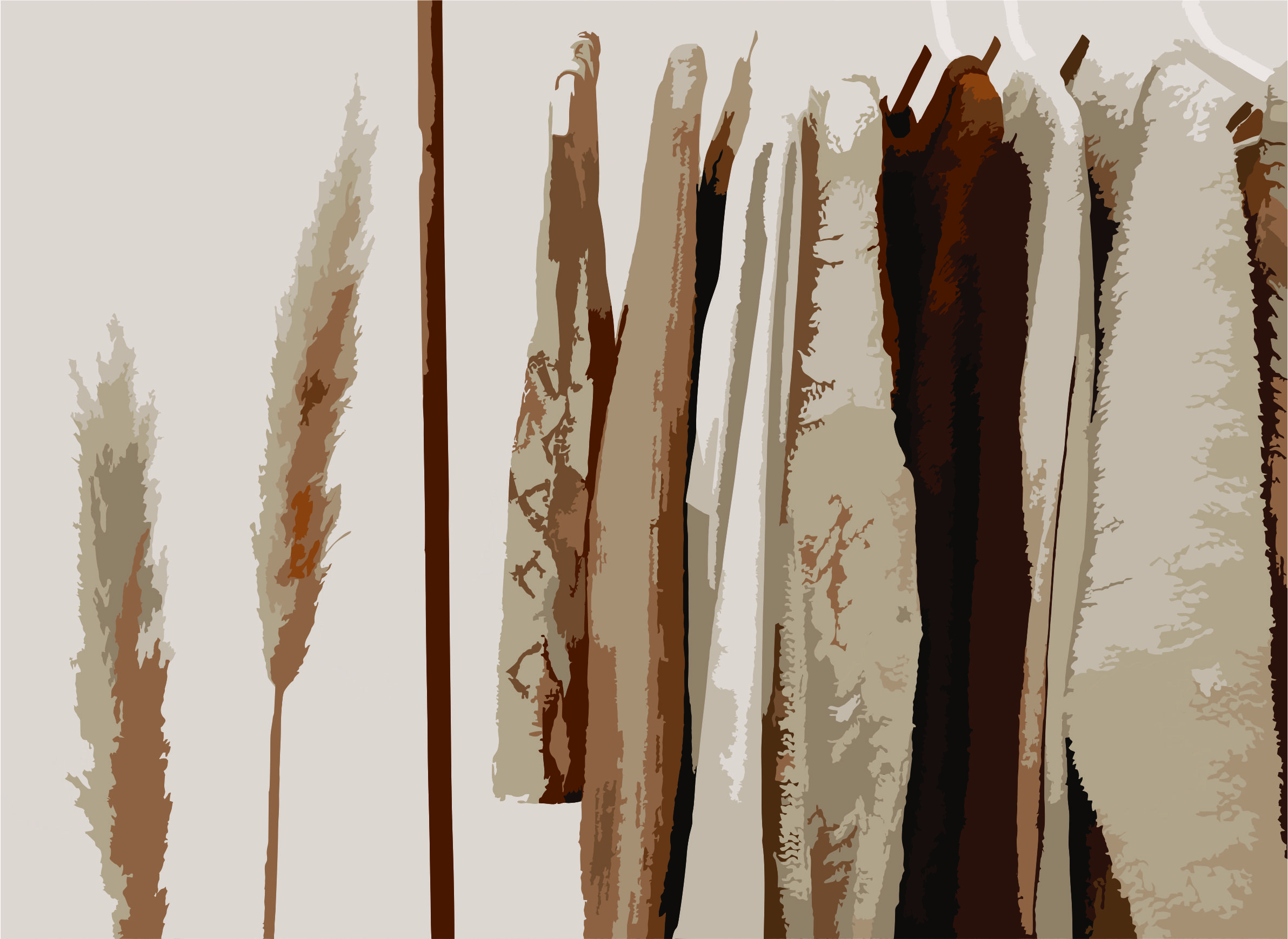
Oh, man! There is so much information out there that makes building a sustainable wardrobe feel truly overwhelming. Especially today, where we find thousands of brands telling us that they’re adapting their environmental & ethical standards. How can we know who to trust?
You’re the customer, so it’s easy to feel like you’re in the middle. Like the choices you make, and where you decide to invest or throw your money away will make a difference. It’s true, it makes a difference, because like I said, you invest or you throw your money away, as simple as that. But don’t stress out! It’s actually a lot easier than you think!!
You don’t have to transform your wardrobe from one day to another, it’s all about taking small steps, and any change you decide to make helps. Don’t feel bad if you can’t do it all at once.
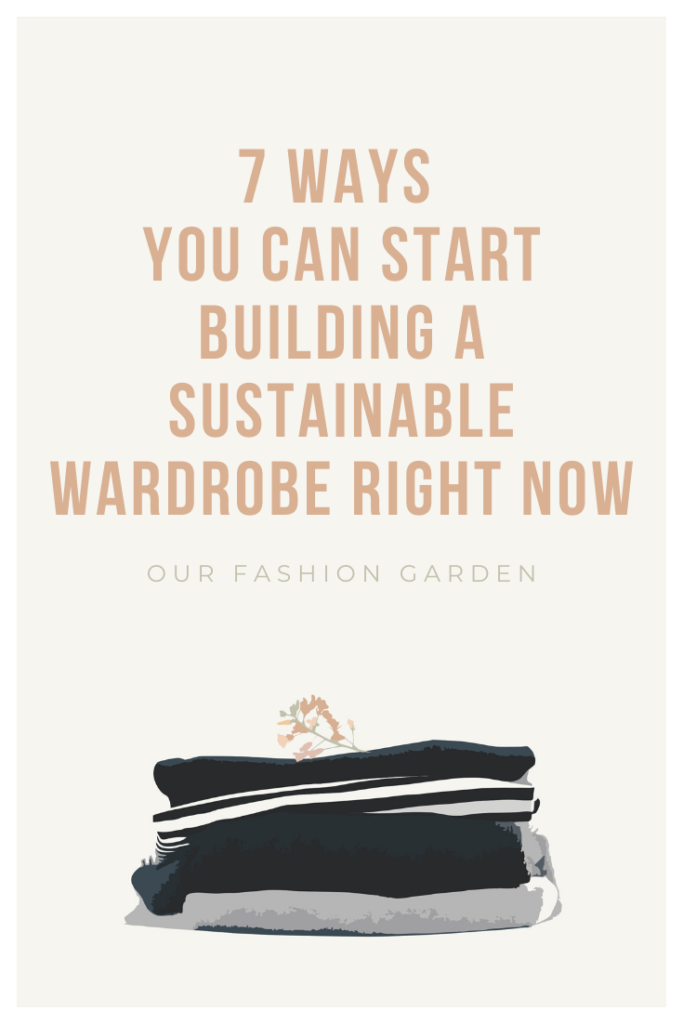
There are two main things you need to be aware of before you start building your wardrobe:
The first one, what is a sustainable wardrobe? Well, obviously, it is a wardrobe composed of sustainable garments, or a wardrobe sustainably planned. So, what you truly need to know is how to identify a sustainable piece of clothing —which I’ll show you in this post—.
Second and most important: it all starts with a conscious consumer because a sustainable wardrobe is built with purpose, not by randomly buying clothes that you like. So, even if you buy only sustainable pieces, if you don’t plan, chances are you will end up thinking you have nothing to wear again.
So, what can you do RIGHT NOW to start building a sustainable wardrobe?
1. Make fibers a priority
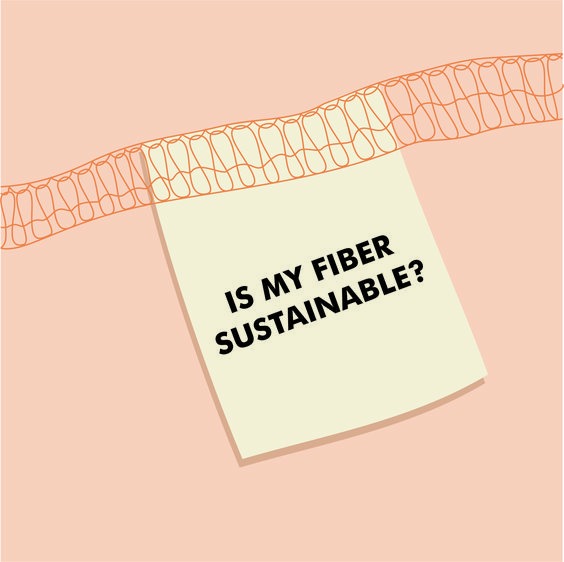
Pay attention to the labels of your clothing before buying. What is your garment made of?
The most sustainable option would be opting for natural fibers as they are biodegradable. You can literally dig a hole in your garden, put your garment there, and bury it. Eventually, it will disappear, avoiding residues. Cool, right?
However, while natural fabrics are biodegradable, it doesn’t mean they didn’t have an environmental impact on their harvest. Natural fibers like cotton require big amounts of water to be produced, which means that they aren’t really sustainable. Besides, it has a lot of chemicals on it thanks to pesticides.
Cheack out our fiber dicitionary to find out which fibers to avoid.
Organic cotton is a better option — just for the chemicals, but still uses a lot of water—. Recycled cotton is better because you are no longer generating more product, you’re just reusing what already exists. It’s actually one of the most sustainable options right now and it isn’t as expensive as organic cotton.
Organic linen & bamboo are great options too, as well as Tencel. They are soft and beautiful and require way less water than cotton does to grow them.
For winter fabrics, there is leather, wool, alpaca, and cashmere. Amazing options, because they are natural.
Any vegans here? I hear you! I was in trouble too when I decided to go vegan some years ago. Don’t worry though, that doesn’t mean we have to opt for synthetic. For a leather replacement, Piñatex is there for you, a fiber made of pineapple. Isn’t it wonderful?
When it comes to wool & other fabrics, it’s hard to find a natural replacement for them. Again, recycled cotton can be an option or recycled acrylic, which is a synthetic option. While there are a lot of brands that have ethical standards to avoid animal cruelty, you still have the option of buying synthetic products. I wouldn’t recommend it, because they aren’t just lower quality but, they are not biodegradable and take about 200 hundred years to degrade. That’s a lot.
Anyway, if you’re going to still buy synthetic, it is not the end of the world, as long as you are a responsible consumer. If you get synthetic, make sure it is recycled fiber.
Finally, always, always, ALWAYS make sure your garment is made of 100% the same fiber. If it is polyester, acrylic, rayon, or any fiber. Avoid blends like cotton with polyester, or cotton with elastane. Any blend, at all. Blends make it way hard to recycle, sometimes almost impossible because they need to separate them and that’s not an easy job. So if you can, avoid clothing pieces that include a lot of different fibers on them.
2. Use what already exists
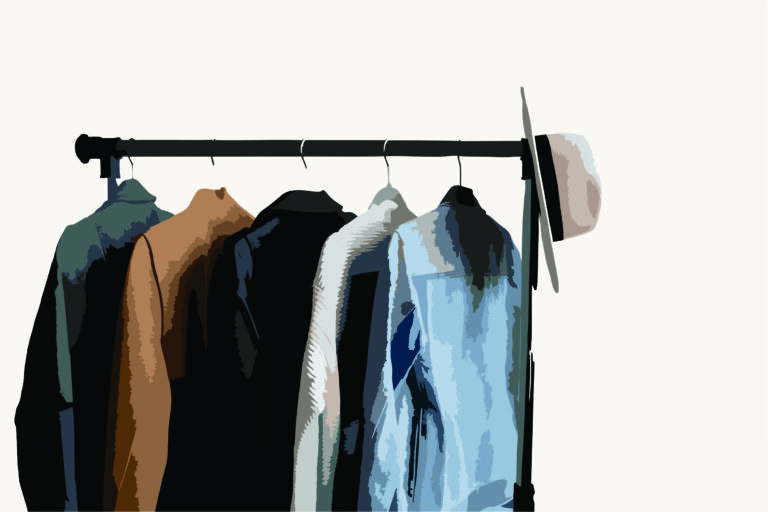
Yes, I mean your closet. Many people think that because they own a lot of fast fashion, their wardrobe isn’t sustainable, which is kind of true, BUT getting rid of all the fast fashion you own is the worst thing you can do. Why? Because you’re generating more waste, and we don’t want that.
You already own everything in your closet. Use it until you feel like it can’t be used anymore and if you just stopped liking it, at least donate it to a thrift shop, maybe someone can give a second use to it. Who knows?
In case your garment feels totally unwearable, it’s time to see how to manage the waste:
If it’s cotton, linen, silk, wool, or any natural fiber it’s good news! You can bury it in your garden and it will biodegrade in some months. Mother nature is truly awesome.
On the other hand, if it’s a synthetic fiber, then it won’t degrade until a couple of HUNDREDS of years. Sad. So, as now responsible consumers we must figure out what to do. Here are two options:
1. Find a way to reuse the garment. Maybe cutting it and creating a tote bag for your groceries, use it as pillow filling or a dog sweater. There are tons of ideas, just don’t give up!! But just in case you give up, there’s still option 2.
2. Look for your nearest collection center specialized in textiles. These places recycle the fibers to create new fabrics, so it’s a great option too. Some brands even collect their own garments so, you could check that out!
If you want to buy new clothes, you can always buy second hand. This is the easiest way to be sustainable. Go to a thrift shop and start buying there. It’s affordable and you avoid generating more trash & water waste.
Especially for synthetic fibers, buying second-hand is a fantastic option for garments like acrylic sweaters, polyester tops, chiffon dresses, or tulle skirts.
3. Choose quality over quantity
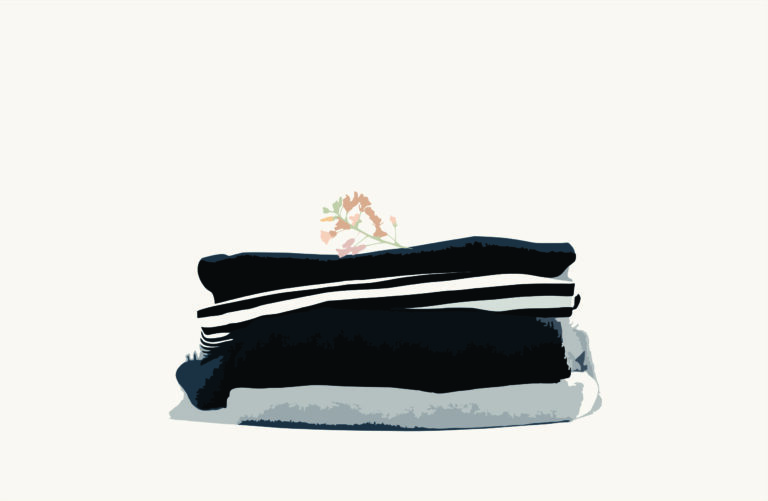
I know this sounds cliché, but It’s not overrated.
The cheapest your clothes are, the least they will last and with cheap I don’t exactly refer to the price. You need to look after good finishes, from the fabric to the seams.
You normally know when a fabric has good quality vs when the quality sucks. Try to stick to rich thick fabrics. I know you can only notice this by buying at a physical store, but I guarantee you won’t find the best fabrics by buying on the most inexpensive brands. So you can get an idea of the quality by simply looking at the price.
Turn the garment backward and look at seams. Do they look like they sew it fast and under pressure? Or do they look neat, ironed, and perfect?
Seams matter a lot. If they are not good quality, if they look loose and weak chances are they will break. If they break, the thread will start running and you will end up with a no longer-wearable garment. This used to happen to me when I bought from Forever 21 and other fast fashion brands.
So remember, quality means it will last longer, and if it lasts longer the Earth will thank you and your wallet too.
4. Pay attention to trends
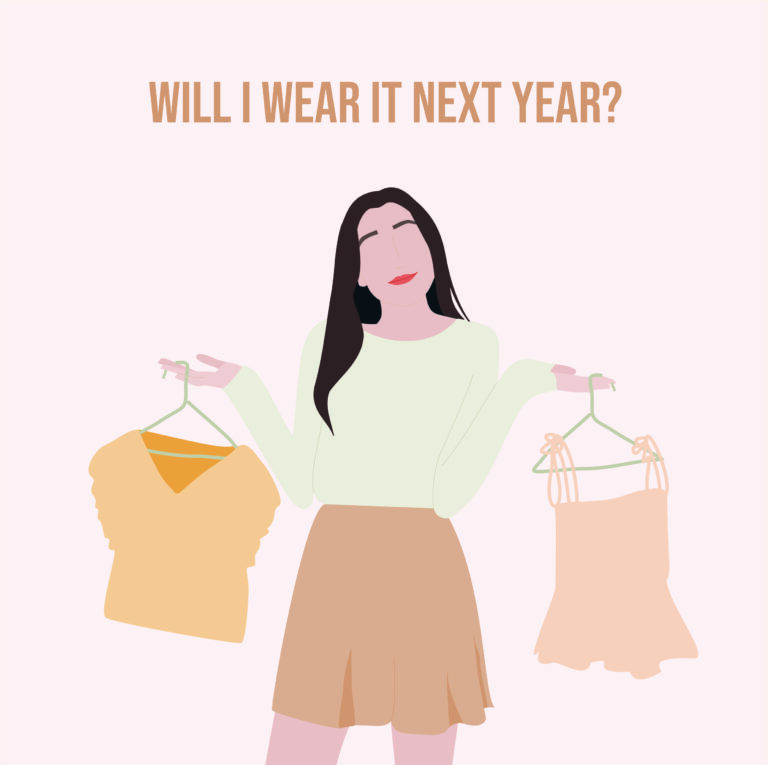
Some trends come and go in the blink of an eye. It’s obvious that you will create a more sustainable wardrobe if you stick to the classics but, if you enjoy looking a little trendy, then you first need to get an eye for that.
There are trends that come to stay for a long time, and there are others that are not very accepted, so they disappear fast.
Before buying a garment, think to yourself:
Will I use this next year?
If this wasn’t trending right now would I even buy it?
This way, you will realize if you just want it because society is pushing you to do it, or because you actually like the trend and it matches your style. Chances are, if you love the trend, you will probably keep using it no matter if the trend is over.
I know you’ve been impulsive before. You probably have many things in your wardrobe that you bought because it was on sale and looked like a great deal. Maybe everyone was using it, so you bought it too. Right? Don’t worry, we all have been there, but we are DONE, and we had enough of this.
There is a rule you can start applying now and it only has two easy steps:
1. Fall in love with a garment.
2. Match it with what you already own in your closet. Simple as that.
You must see the garment and love it. You need to try it on and feel amazing wearing it. If it makes you feel confident, if it makes you feel gorgeous, it passed the first step of our rule.
I know you can’t try it on if you’re shopping online, so you can do this instead: wait a week and if you still love it after that, you can proceed to the next step. Also, if you’ve been looking for a special piece for a while, then I think there’s no need of waiting.
Then, step two: You need to make sure it will look great with other things you already own. If it matches your wardrobe it’s perfect! If it doesn’t, then discard it. That’s exactly what we want whenever we’re about to start building a sustainable wardrobe, to plan and stop buying impulsively. Or maybe you want to try something new and add something different to your closet, then it’s alright to buy it. Remember fashion is made for you to express yourself through it, but make a plan.
5. Ethical goes with sustainable
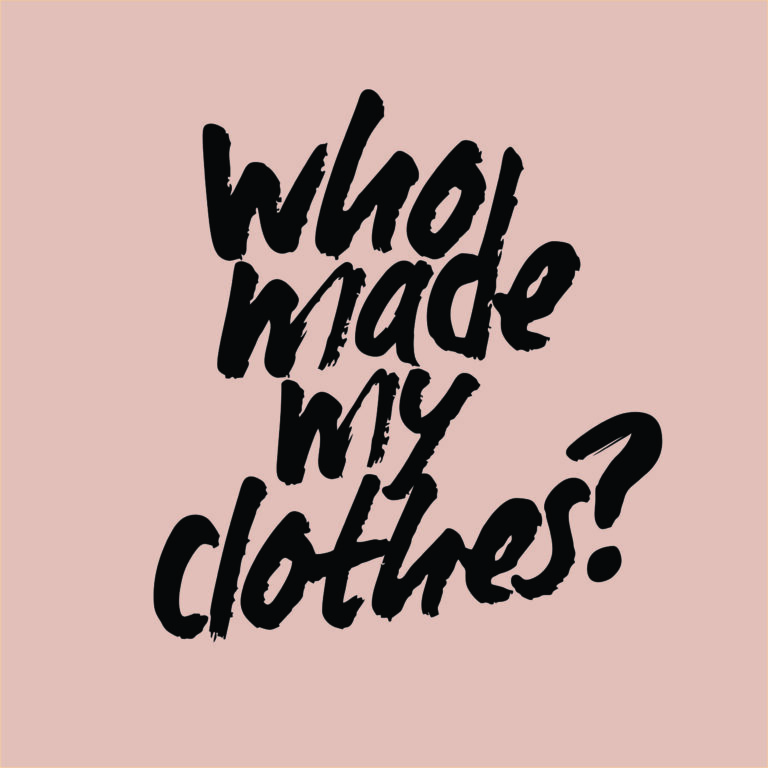
The environment is made of the Earth and its nature, animals, and of course, humans. So, if the brand isn’t ethical, it can’t be sustainable. We must care for the people working and making our clothes, it isn’t just about conserving nature and the planet.
Please, please, PLEASE look where your garment is made. If you can, research the brand and make sure they are working ethically and paying fairly to their employees. As well, if you are buying any animal fiber garments, make sure they have the policy to treat well their sheep, goats, bunnies, or any animal they are obtaining their fiber from. Acting blind to these issues is supporting them.
Remember, people are working for hours so you can get dressed, buying cheap clothing won’t help them. Nor you.
This applies from now on, whenever you want to buy a new garment. Be empathic and care, I know you can do that.
6. Avoid greenwashing
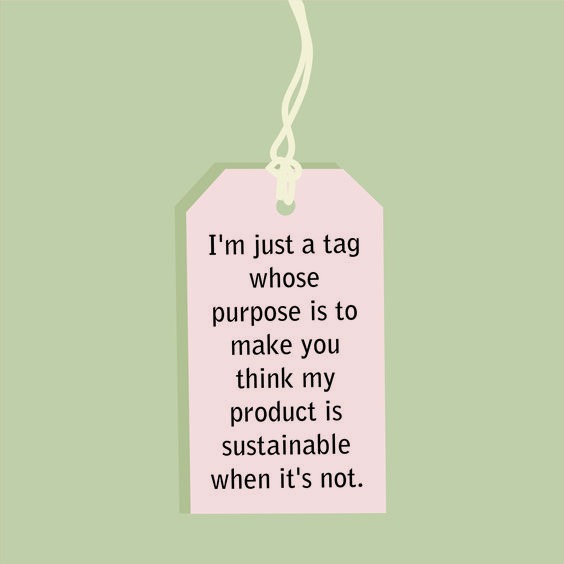
Ugh. Greenwashing is the worst. There’s nothing more hypocrite than this.
If you never heard the term, greenwashing is when a brand sells its products as “sustainable”, when they’re really not. It’s fake marketing that is only used to generate sales and trust.
A good way to avoid being greenwashed is by looking at the brand and its prices. Let me tell you something, no fast fashion brand is sustainable. NONE. So, H&M and Zara can suck it. You can’t claim to be responsible if your prices are as low as they are.
Years ago, when I started my own sustainable brand, I wanted to create something everyone could afford. Bad news: Organic cotton was expensive and paying to my dressmakers wasn’t cheap, at least not if you’re trying to pay a fair salary. And it isn’t just that, prices include labels, transportation, packaging, and other business-related costs. In the end, my product wasn’t affordable to everyone.
Yes, you can say “but Lucy, they make a lot of pieces a day, that lowers their prices” Yes, it does actually, but producing in such a massive and fast way is NOT sustainable. On the other side, slow fashion CAN be sustainable because they produce just a few garments per season.
If a brand has thousands of stores all over the world, where they sell to the masses at the lowest prices ever and claim to be “sustainable”, don’t fall for it. It’s not true. Don’t throw away your money by buying these brands, you can do a lot better, trust me.
Be smart, invest your money don’t waste it, okay?
7. Make your own clothes
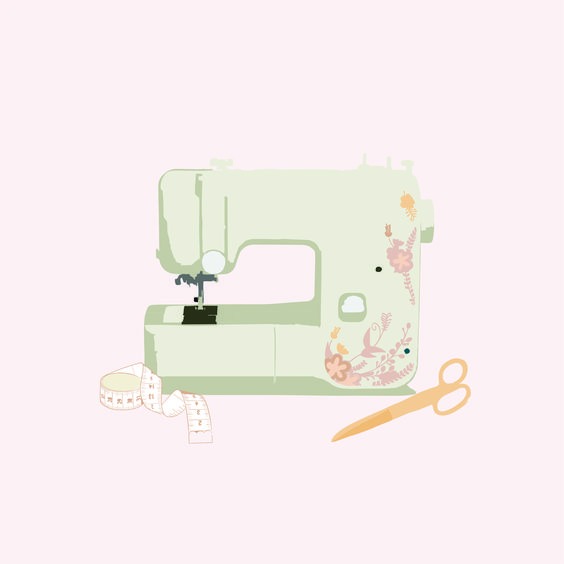
Take out your sewing machine and start working on your own creations! This is one of the best options out there because you can personalize any garment. You can wear unique pieces and put your style on them.
Don’t be afraid of sewing! There are tons of tutorials out there where you can start learning how to sew and this way you can wear trends with less guilt. You can begin by trying some of out tutorials here.
With the right fabric and a few skills, you can create something amazing that fits and looks great on you.
Start one project at a time and who knows? Perhaps you end up making your whole sustainable wardrobe! Also, when you start sewing you value and understand more the work that people who make your clothes have to do daily, so that’s nice too.
Let’s recap! Now you know what a sustainable wardrove is and there are 7 ways you can start building a sustainable wardrobe right now:
- Make Fibers A Priority.
- Use What Already Exists And Know What To Do With The Waste.
- Choose Quality Over Quantity.
- Pay Attention Trends.
- Ethical Goes With Sustainable.
- Avoid Greenwashing.
- Make Your Own Clothes!
After all, as long as you decide to try one of these 7 ways you are making progress. Remember it is always better a small change than no change at all.
It doesn’t have to be overwhelming or too much, start small. Once you master one, you can go on to the next one. It takes time and no one changes their wardrobe overnight. If you’re informed you are winning, and here you have all the information you need to start. The simple fact that you’re here means that you care and that’s already wonderful.
We need people more people like you who want to make a change to create an even bigger impact, so don’t forget to share and comment below if you have any doubts so we can help you immediately!
Oh, and before you go, we have some FREEBIES for you here.
become an official member of our club!
We would love you to be part of our community. There are monthly freebies, giveaways, weekly tutorials, and other secrets we only share with our insiders!
join at the end of the page




Leave a Reply